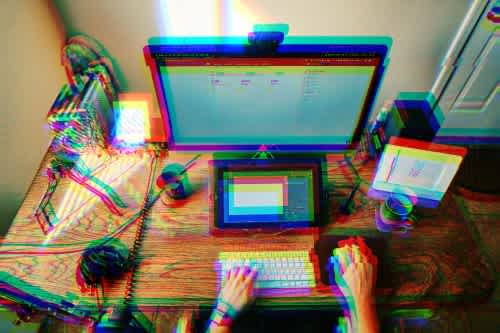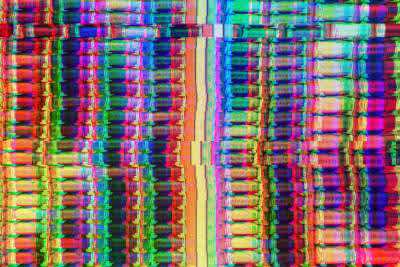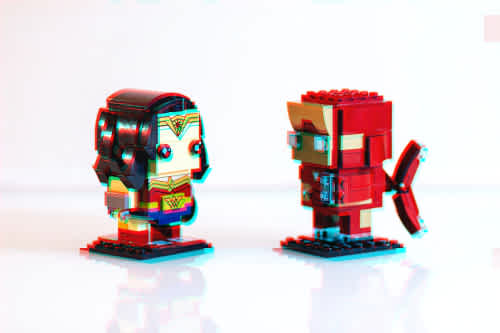The future of a company is dependent on the internal team, and if the team feels like they’re succeeding, then naturally, so will the company. Yet the larger a team grows, the more blockers they face. For development teams, this means less productivity and motivation. I’ve seen too many good teams struggle because the systems in place restrict time and quality work.
In my software development career, I’ve found Research and Development (R&D) days to be one of the most successful strategies in freeing the development workflow. Yes, they’ve been buzzing around for a while now (mostly in tech) and for good reason. If done right, R&D onsites can have a tremendous effect on the team.
Over the years I’ve worked within an array of different environments alongside some of the sharpest minds in tech, and have learned a lot about what makes a company thrive. While I was at eBay, I spent plenty of time coaching developer teams and helping to remove blockers so they could do their best work. Now settling in as the VP of Engineering at Onefootball, I’ve had the opportunity to implement an R&D strategy which we’ve refined — through trial and error — to work best for our teams as they service millions of football fans around the world.
Why R&D days?
If you look closely, you’ll find what most often blocks a team is the system that they are working within — and it’s usually tooling or the technology. It doesn’t matter what threats you throw at your engineers or the pressure you put on them, no team can be agile or high performing if the technology — or the system surrounding it — is not. R&D days are a time to address these blockers in the workflow, and for the team to sit back and examine how they work and how it can be improved.
When a team or company grows, the number of things that can hinder high-value work increases. There will be more bottlenecks in the workflow and more manual work, which means there is a greater chance a team can overheat. All of these things are bad for the health of your current and future teams. In an environment like this (which is common), it’ll be harder to source and secure talent, and more importantly, create a driven and motivated workforce.
Setting up R&D days
There’s no silver bullet for setting up R&D days, all I can say is what has and hasn’t worked for me over the years. But the most important thing is to start; get management on board and ensure the stakeholders are fine with the time you intend to sideline for these periods. The great thing about Onefootball is that we’ve been an innovative company from the beginning, always experimenting with the way we work.
For us, we run R&Ds twice a month for a full working day. In the past, we’d experimented with a full week every month and a few other approaches, some structured and others very flexible. Two days a month proved to be a perfect balance; it’s enough time to get the innovative juices flowing but not too much to break the flow of the sprints. Here are some key points to remember when setting up R&D days.
Don’t create silos
Silos are when teams isolate themselves within their own context and it’s something that usually happens as a company grows. An important part of innovation and creativity in the workplace is removing people from that everyday context, so they can see the bigger picture. You want to have solutions and innovation that can be shared throughout departments.
Same-day for everyone
Make sure all departments have the ability to run R&Ds on the same designated day. Again, it’s about changing context and encouraging more innovative ideas across the board. You limit the ability of your team and the potential motivation derived from the experience when confining teams in their same everyday context.
Plan R&Ds into your sprints
This is about taking it seriously and making sure everyone participates, regardless of the workload. Protect these days and ensure they are taken seriously and not swept away in the chaos of project management.
Avoid breaking the flow
You don’t want to pull a team out of their context just as they are hitting their stride. When we were doing week-long periods of innovation we quickly realised it was interrupting the team’s flow and they were taking longer to adjust after a week out. With one day at the end of a two-week cycle, the team is able to get back into the swing of every-day work without a hitch.
Benefits of Research and Development Days
1. R&D days give time to think and create solutions
As I’ve already mentioned, our R&D days help remove people from the every-day workload, which most often is a series of endless tasks. It’s not healthy for a team to be 100% busy. I see two main reasons for this: first, teams that are constantly under the pump can overheat, and second, tight deadlines and high-pressure environments don’t foster the best solutions and most often result in corner-cutting (no kidding).
You’ll find when pressure is turned down, individuals can begin to think outside of the box and take more innovative risks towards the problems a department or company faces. Each session results in amplified energy and renews team motivation towards the tasks at hand. With new actionable ideas and a motivated problem-solving mindset, you’ll find your teams moving forward with clarity and foresight.
2. Creates greater context for the organization
During our R&D sessions, we encourage inter-departmental collaboration. This means that team members mix up and connect. They share their different perspectives with each other and come away with a deeper understanding of our organizational needs across the board. Not only does collaboration serve as a method to align the organization, but it also broadens the overall context-mindset for each team member.
I’ve been in plenty of situations where one team was ‘fixing’ bugs in the system, while at the same time creating roadblocks for other teams six months down the line. The more context and connection a team has with the other departments, the more knowledge can be factored into specific solutions. If you want to build and deliver better product architecture, then this type of collaboration is extremely helpful.
3. Helps to develop interpersonal skills
I know of many developers who are more than qualified for a team lead position, yet they remain in more junior positions because of undeveloped interpersonal skills. It’s a waste — especially if they haven't been given the opportunities to practise these skills inside of their workplace.
In our R&D sessions, there’s a perfect opportunity for those soft skills to be developed. Anyone who’s willing can organise and lead projects for the day in a pressure-free environment and without the fear of failure. I always encourage those who show an interest in leadership to take these steps and begin developing people skills during these sessions. Anyone can lead and that’s so important to the development of individuals as well as teams and organizational culture.
4. Learning and growth
Growth is a powerful motivator in the workplace. When people find their jobs challenging and face new problems, it forces them to grow and expand their knowledge. In doing this, the job feels active and new, and it helps to break the repetitive cycle of the day-to-day, which is the pitfall of most workplaces. Junior developers often get stuck with a lot of manual work, which, in all honesty, is quite boring. R&D time is some of the only time they can be creative and apply their ideas in a work-related context. It’s a much-needed break from the grind, and you’ll be encouraged to see how rewarding it actually is.
Creating an environment that encourages growth will also accelerate the energy of your team. They will become more active in their approach towards problem-solving, bringing better solutions forward. And I always find them energised and motivated to dive back into their sprints.
Measuring Success
We have a few ways of measuring the success of our R&Ds. Mostly I rely on the feedback from the engineers through one-on-ones and anonymous surveys. I’m wanting to know if they enjoyed the time spent, and if they learned something new. From a quantitative perspective, the managers see a clear spike in employee motivation and work ethic, and for me, that tells me this is hugely influential on employee satisfaction and cultural health.
On top of this, the ideas that come out of these sessions actually impact the business in a tangible way. For example, one engineer figured out a method for deploying a service of a docker container to their local server, which made it easier and faster to test things. That’s just one of the many initiatives that people have come up with. I’d just add, this type of stuff is possible because the management doesn’t pressure the team for any specific outcomes. It’s completely an environment where people are free to fail.
I don’t want people to think these two days are some kind of gift to the engineers (and everyone else involved). What comes out of these sessions is hugely beneficial for management and the overall health of the company. And as we know, the health of a company is in direct correlation with output.
Takeaways
Giving people time to work on the things they enjoy and find value in is the key to a motivated and switched-on workforce. This is something I would encourage all tech businesses to consider seriously, whatever lifecycle you’re in. It’s probably even more important for larger companies since cultural degradation and ‘silos’ are far more common. Of course, there are other factors that can influence company health and employee satisfaction, but as a manager or CTO, this is one way you can address the major concerns and blockers head-on as a team.


